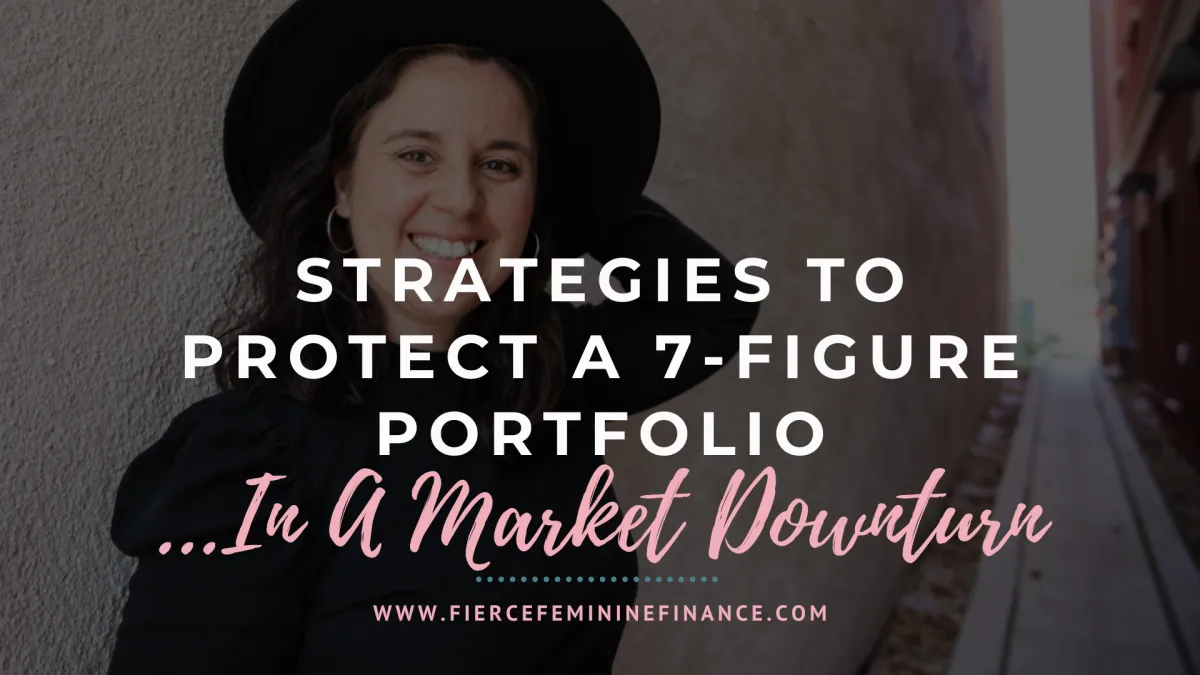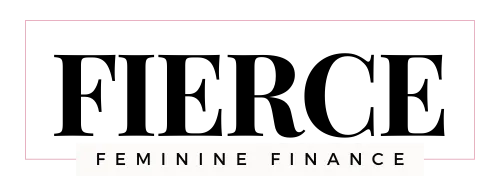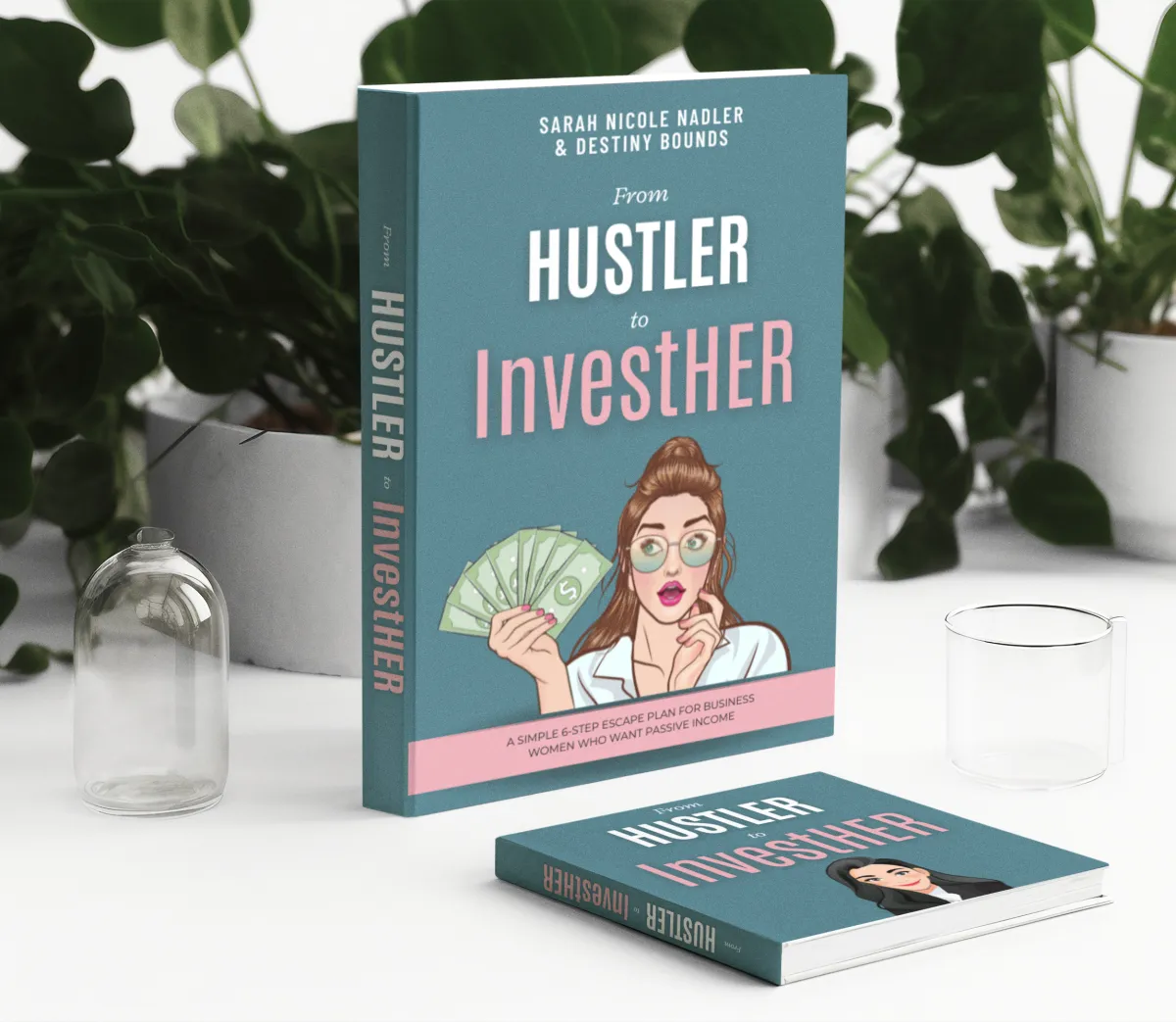
Strategies To Protect A 7-Figure Portfolio In A Market Downturn
"Her entire financial stability depended on one source of income, and when that source disappeared, so did everything she had built."
You built a thriving business, scaled it up to support your family, and maybe even a few dozen (or hundred) employees.
You've also done the smart thing and invested outside your business, and now you've built a 7-figure portfolio. But here's the thing—markets don't move in straight lines. They rise, they fall, and sometimes, they nosedive just when you're getting comfortable.

So, what's a Savvy InvestHER to do?
If you have a 7+figure portfolio to protect, or even if you're just starting to invest outside your business and want to be prepared for whatever chaos in the market this year will bring, this article will break down the key strategies I personally use to safeguard my portfolio and maintain financial security, even when the Wall Street bros are throwing a tantrum (and they say women are "overly emotional" 🙄)
Why Listen to Me?
As a financial advisor & money coach for female entrepreneurs, I see the behind-the-scenes of business owner's financials every. single. day.
But I don't just teach this—I live it.
I've had to navigate financial downturns while protecting my investments, and I've learned firsthand what works and what doesn't. This article is about real, tested strategies that I personally use and recommend to my clients. Including my Fear to Fierce Financial Formula:
Profit – Making sure you pay yourself first and prioritize revenue streams.
Prepare – Ensuring you are ready for disaster preparedness and unexpected expenses.
Eliminate – Paying off debt and building strong credit to create financial freedom.
Protect – Safeguarding your assets and ensuring your financial security.
Grow – Building long-term wealth and creating passive income streams.
Today, to help you safeguard your investments, I’m breaking down four powerful components of Step 4 "PROTECT" in the Fear To Fierce Financial Formula.
With every episode of Fierce Feminine Finance, I like to empower you with a POWERFUL free resource that goes with the episode which you can implement right away to create some of the same results, if not better, in your business.

This week, since we are talking about ways to protect your portfolio, I want to invite you to my Ultimate Investment Guide for Female Entrepreneurs to help you implement the strategies I talk about here...and a few extra I didn't mention!
After going through this free guide you will be able to identify which strategy for financial freedom is the best fit for you. So you can start taking steps right away to secure your future!
You can download it right away by clicking here or on the photo above 👆
This is NOT investment advice. It's my strategy based on my own financial situation and experience, and is not the advice I would give to every client. If you'd like the support of an investment advisor to work out your own plan, click here to connect with my team.
1. Diversification Is Queen. Don't Bet It All On ONE Asset
First things first, you're already somewhat diversified if you have a business AND outside investments. But if you bought stocks in the same industry as your business—like owning a private healthcare practice and then investing only in pharmaceutical and hospital stocks—you're doubling your risk instead of spreading it.
If your entire portfolio is in one asset class—say, only stocks—you're at the mercy of the stock market bros' mood swings. The key to stability in a market downtown for you would be spreading your investments across different asset types.

You might need to mix it up a bit:
Stocks: go for a mix of growth, values and dividend stocks.
Real Estate: add rental properties or a REIT for consistent income streams.
Business: think about investing in startups across different industries, especially ones that tend to perform well or remain stable during economic downturns (making them contrarian to the stock market because they rise when the market falls).
A few years ago, I had a veterinarian sign up for my 1:1 profit coaching program. She was in her mid-30s, driven, brilliant with animals, and owned her own private practice. But when we took a deep dive into her financials, one glaring issue stood out—she had no reserves, no retirement savings, and no other investments. Everything—her income, her future, her family's security—was tied to one thing: her practice.
I remember asking, "You should really create an estate plan and retirement savings."
She laughed. “I love what I do. I don’t ever plan on stopping.”
Six months later, life forced her to stop.
She had a stroke. A brain tumor was discovered. She was hospitalized, facing an uphill battle for survival, and the practice—the business that had been her entire financial world—came to a screeching halt.
With no other income streams, no backup plan, and no passive investments, her business dried up. Clients left. Employees had to find other jobs. And the income that had supported 75% of her family's expenses was gone overnight.
It was devastating. Not just for her, but for everyone who had relied on her business to keep running.
This wasn’t just a case of bad luck—it was a case of concentrated risk. Her entire financial stability depended on one source of income, and when that source disappeared, so did everything she had built.
If she had invested outside of her business—maybe some stocks, a rental property, a retirement account—she would have had a financial cushion. If she had even built a team to help run the practice without her, it might have survived. But because all of her eggs were in one basket, there was nothing left to catch her fall.
It was one of the hardest lessons I’ve ever witnessed firsthand. And it’s why I tell every entrepreneur: diversification isn’t optional—it’s survival.
2. My "OWL" Method for Creating A Volatility Shield
The biggest risk of investing in the stock market is what happens if you need access to your money during a downturn—selling at a loss could set you back years in your wealth-building journey.
In his book, Volatility Shield, David McKnight addresses this by telling investors to "cash stuff" in a life insurance policy as a "rainy day fund" that's guaranteed against market loss.
I tried it, and it worked.
So I started recommending these to clients who are risk-averse, and want a safety net that will grow at the same rate as the S&P 500 or Global Index Fund, but unlike stocks, it won't lose value when the market drops.
When the stock market crashes, for most investHERs it's like suddenly waking up and half your shoe collection is gone. Using my "OWL" Method (or Dave's Volatility Shield) however, your financial "shoe collection" stays untouched by market chaos.
Even better, your gains grow tax-free, like earning store credit on every handbag purchase instead of losing money with depreciation.

And let's talk liquidity, because what good is a perfume bottle if you can never get it open when you want to use it?
Unlike stocks, where selling at the wrong time means locking in losses forever, I call this my "OWL" Method because it's like an Opulent Wealth Loop...
You can borrow against your cash value whenever you need funds, without diminishing the underlying asset. Think of it like those nifty store credit cards they offer at your favorite boutique.... but with way better interest rates, and you never have to pay it back unless you want to!
3. Cash Reserves Are A Secret Weapon In A Downturn
Did you know that more millionaires are made during a recession than at any other time? When the market dips, cash is queen. Keeping 6-12 months of expenses in cash reserves helps you avoid selling hard assets at a loss when times are hard. It also gives you the ability to invest in undervalued assets when prices drop because of panic.
If you’re a high net worth investor and serious about protecting your wealth, you need to keep a sufficient cash reserve that you can afford to make data-driven (not emotional) decisions during a market downturn.

InvestHERs who are prepared can invest when others are pulling back, creating opportunities to make higher-than-average returns. For example, during the 2008 housing market crash, investors who had large cash reserves were able to buy foreclosed properties at a steep discount and rent them out.
This not only was a savvy financial move, it also helped the economy and made it possible for many of those new landlords to offer more affordable rent.
If you, or your financial advisor, are seeing a market downturn on the horizon or preparing for one, focus on building your cash reserves.
4. Pivoting Is The Secret Weapon of Wealthy Women
Many financial advisors focus only on portfolio protection in a market downturn for their high net worth clients, but you and I have never been "average" ;-)
The fact is, one of the best ways to weather a downturn is protecting your business cashfkow. If your business is thriving, you don't have to touch your portfolio when the market dips.
I learned this the hard way during 2020. The market dipped sharply in March, but came right back up as companies with savvy CEOs pivoted to online, invested heavily in R&D, and prepared to face the post-covid era.
Market research skills are, I think, the most overlooked and undervalued talents for an InvestHER or female entrepreneur.
The ability to quickly dream up, validate and launch a new offer (or shift a campaign mid-stride when a shifting market demands it) will make you more money than any ability to evaluate individual stock performance.
Because while picking winning stocks is useful, the ability to adapt. To pivot. To capitalize on opportunities in real-time is what truly builds sustainable wealth.
Such a person can have every last penny or asset stripped away...
And will only go right ahead and build it all back up again.
So, if you are worried about protecting your 7-figure portfolio, focus first on strengthening the one asset no market crash, recession, or downturn can ever take from you—your ability to create, adapt and validate offers the market wants.
Because true financial security isn't about holding onto what you have—it's about knowing, without a doubt, that you can rebuild it anytime, anywhere.
A Beginner-Friendly Class On Investing & Building Passive Income for Business Women and Entrepreneurs
Get my exclusive strategy for turning your intellectual property into passive income and growing it to 5-figures per month and beyond! FREE


© Copyright 2024 Sarah Nicole Nadler LLC. All rights reserved.
2022 All Rights Reserved.



